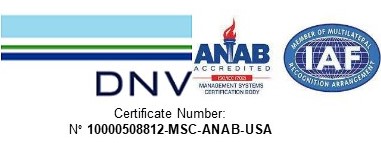Members,
USACE EMERGENCY RESPONSE SALT WATER SILL CONSTRUCTION:
Weeks Marine has set the four can buoys as detailed by the message quoted below from their project manager, the buoys were set at 0800 hours. The attached Marine Safety Information Bulletin (MSIB) issued by the U.S. Coast Guard identifies x/y coordinates for these buoys) the buoys mark the western edge of the channel to be utilized by both shallow- and deep-draft with one-way traffic.
The first period of one-way traffic controlled by a Contact Pilot on the CAPT SAM begun at 0800 hours and is detailed in the attached MSIB.
The J.S. CHATRY is expected to begin dredging for 12-hours (clock assumed to start at 1200 tomorrow) per Weeks suggestion to test the operations for navigational safety and dredge disposal efficiency (sill construction) the approved method to install the pipelines and construct the sill are different than those used in 2012. The USACE, USCG, pilots, deep- and shallow-draft representatives will all be advised to direct traffic around this project and remain in close contact via daily calls and updates, the emergency nature of the project means it will move fast and is expected to take less than two-weeks to complete based on output parameters.
The cutterhead dredge J.S. CHATRY is expected to begin dredging to construct the saltwater sill at 1200 hours today (Tuesday, October 11, 2022).
“The dredge J.S Chatry is staged in the Saltwater Sill borrow area. Submerged line was laid yesterday down the right descending back of MS River around mile 64. Pontoon subline was staged and connected yesterday by the dredge crew.
WMI bullgang finished putting rubber hoses together yesterday and will connect it to the dredge this morning.
All USCE meetings will be held with onsite inspector after 10:00 Navigation meeting, and dredging will begin around lunch.
The dredge crew will set out the navigation buoys for vessel traffic at 0800 this morning. These buoys will be yellow can buoys with solid white lights.”
There is a second attachment provided by Weeks that includes a diagram of the expected location of the dredge and equipment to explain the expected project footprint. Note the sill construction will start on the eastern side to try and fill in the deeper holes first, the dredge will adjust to fill in other areas when there is passing vessel traffic.
The Marine Safety Information Bulletin (MSIB) as developed by the U.S. Coast Guard and the Navigation Bulletin released by the U.S. Army Corps of Engineer are both attached.
The channel restrictions detailed in the MSIB are listed below:
All vessels are limited to one wav traffic from MM 63.65 to 63.91 AHP confined to a channel soo· wide. The channel follows the Left Descending Bank (LDB) and is marked on its West side by four white buoys with fixed white all-around lights.
- All vessels transiting this zone fil!!!.!.check-in with. and take direction from the Contact Pilot onboard the TN CAPT SAM 30 minutes prior to arrival on Channel 67.
- All vessels filllill transit at their slowest safe speed between MM 63.5 to 65 AHP.
- All vessels anchoring in Alliance Anchorage shall maintain a minimum 2,500″ separation from the J.S.
- CHATRY. Additionally. the northern most 600′ of the anchorage is closed. Vessels anchored may be required to vacate at the discretion of the Contact Pilot.
- The Contact Pilot is the Coast Guard’s Designated Representative.
- These measures will remain in effect until rescinded/adjusted at a future date.
Please see the complete details in the two attachments for more details on the sill construction, note that additional conditions and the potential to construct the sill higher than – 55 feet could indeed lead to the rapid establishment of maximum draft restrictions. The first few days of this operation will be critical and the success of the creative method to pass vessel traffic will limit more severe transit restrictions.
The graph below is reproduced from NOAA’s National Weather Service website and represents an experimental product to account for the complexity of accurately predicting long-range precipitation. This forecast projects stage levels based on expected precipitation for 2 days (top) and 16 days (bottom) and was developed within the North American Ensemble Forecast System (NAEFS) computer model and highlights Quantitative Precipitation Forecasts (QPF). Along with the forecasts, a shaded area is also provided to indicate uncertainty for the forecast each day in the future. These plots are experimental and not an official forecast product.
The river stage levels on the Mississippi River from Helena (Arkansas) located at Mile 663.1 Above Head of Passes on down are now passing a little bump in stages but all are expected to begin a slow fall over the next few days.
With You,
Sean
Sean M. Duffy, Sr.
Executive Director
Standing By Channel: (504) 338-3165
Big River Coalition
This E-Mail transmission (and/or the documents accompanying it) may contain information belonging to the sender that is confidential, privileged and/or exempt from disclosure under applicable law. The information is intended only for the use of the individual(s) or entity named above. If you are not the intended recipient, you are hereby notified that any disclosure, copying, distribution or action taken in reliance on the contents of this information is strictly prohibited. If you have received this E-Mail transmission in error, please immediately notify us by return E-Mail or telephone to arrange for the return of its contents (including any documents).




